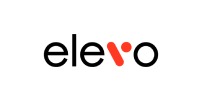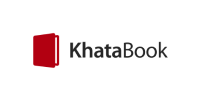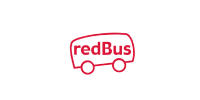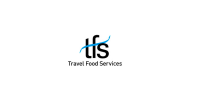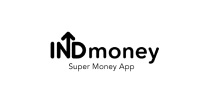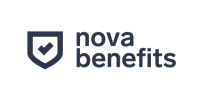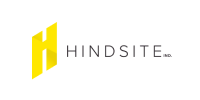OKR Examples for Engineering Teams
From data security to product recovery rate, enhance them all by setting the right OKRs for engineering teams
-
Drive team focus and goal alignment
KR1
-
Build competitive products that match customer needs
KR2

Example: 1
Objective : Make our product work like butter
Enhance the user experience by ensuring our product is smooth, seamless, and enjoyable to use, minimizing friction and maximizing user satisfaction.
-
Identify all sub 300ms page load times and fix 80% of them
KR1
-
Identify all broken design (UI) experiences and fix 50% of them
KR2
-
Improve user experience (UX) by addressing the top 5 pain points identified in user feedback
KR3
-
Achieve a 95% success rate for task completion in usability testing
KR4
-
Increase product stickiness by raising the average daily user session duration by 20%
KR5


Example: 2
Objective : Making identifying bugs before release easier and faster
Streamline the bug detection process prior to release by implementing proactive testing strategies and automated tools, reducing the time and effort needed to find and resolve issues.
-
Increase Payment Module automation coverage from 20% to 50%
KR1
-
Increase Signup Module automation coverage from 70% to 100%
KR2
-
Reduce the average time to identify and fix critical bugs in the pre-release phase by 40%
KR3
-
Conduct regular cross-functional bug bashes with at least 80% team participation to improve collaboration and early detection
KR4
-
Improve test case documentation and management, achieving a 90% completion rate for critical test scenarios
KR5
Example: 3
Objective : Make application deployment and infra management easier
Simplify application deployment and infrastructure management processes by adopting modern tools and best practices, reducing manual efforts and enhancing overall team productivity.
-
Migrate 90% of services to kubernetes
KR1
-
Reduce the number of manual steps for deployment from 5 to 2
KR2
-
Automate 80% of infrastructure provisioning and management tasks using Infrastructure as Code (IaC) tools
KR3
-
Migrate 75% of applications to containerization technology (e.g., Docker, Kubernetes) for streamlined deployment and scaling
KR4
-
Reduce infrastructure management overhead by 30% through optimization and automation
KR5


Example: 4
Objective : Improve code quality and maintainability
Ensure the engineering team delivers clean, maintainable, and reliable code, reducing technical debt and enabling faster development.
-
Achieve a 95% pass rate on automated code quality checks
KR1
-
Reduce the code review cycle time by 30%
KR2
-
Decrease the number of critical issues found in production by 40%
KR3
-
Increase unit test coverage to 85%
KR4
-
Refactor 20% of the codebase identified as high-risk for maintainability
KR5
Example: 5
Objective : Optimize system performance
Enhance system performance by identifying and addressing bottlenecks to improve user experience and reduce infrastructure costs.
-
Improve average page load time by 25%
KR1
-
Reduce server response time by 30%
KR2
-
Decrease database query execution time by 40%
KR3
-
Optimize resource usage by 20%
KR4
-
Achieve a 99.9% uptime for all services
KR5


Example: 6
Objective : Accelerate product development
Streamline the development process by implementing efficient workflows and tools to enable faster delivery of new features and improvements.
-
Reduce feature development time by 30%
KR1
-
Decrease the number of open bugs by 40%
KR2
-
Implement a continuous deployment pipeline for faster releases
KR3
-
Achieve 90% adherence to agile sprint commitments
KR4
-
Increase the frequency of product releases by 50%
KR5
Example: 7
Objective : Enhance product security
Strengthen the security posture of the product by proactively identifying and addressing vulnerabilities, ensuring customer data is protected.
-
Complete a comprehensive security audit with zero critical findings
KR1
-
Implement two-factor authentication for all user accounts
KR2
-
Resolve all reported security vulnerabilities within 48 hours
KR3
-
Conduct monthly internal security training sessions
KR4
-
Achieve compliance with industry-standard security certifications (e.g., ISO 27001, SOC 2)
KR5


Example: 8
Objective : Cultivate a culture of innovation
Foster an environment that encourages experimentation, learning, and collaboration, driving innovation and continuous improvement.
-
Launch two internal hackathons with at least 70% team participation
KR1
-
Implement a monthly innovation challenge with 100% team engagement
KR2
-
Dedicate 10% of engineering time to research and exploration of new technologies
KR3
-
Share knowledge through weekly tech talks or presentations
KR4
-
Create and maintain an internal knowledge base to document best practices and lessons learned
KR5
Example: 9
Objective : Improve team collaboration and communication
Enhance collaboration and communication among team members, streamlining processes and facilitating knowledge sharing.
-
Implement a standardized communication tool for team-wide use
KR1
-
Hold weekly cross-functional meetings to share updates and discuss challenges
KR2
-
Establish a mentorship program within the team
KR3
-
Create a centralized documentation hub for engineering processes and resources
KR4
-
Achieve a 90% satisfaction rate in quarterly team collaboration surveys
KR5


Example: 10
Objective : Improve localization footprint
Enhance the user experience for non-English-speaking markets by expanding and improving the localization capabilities of the product, enabling access to a wider customer base.
-
Increase the number of supported languages by 50%, reaching a minimum of 10 languages
KR1
-
Achieve a 90% accuracy rate for machine-translated content, reducing the need for manual translation efforts
KR2
-
Implement a streamlined localization process to reduce localization lead time by 30%
KR3
-
Conduct monthly user feedback sessions for localized versions, identifying and addressing issues promptly
KR4
-
Achieve a 20% increase in revenue from non-English-speaking markets due to improved localization capabilities
KR5
Looking for a better way to manage OKRs?
See how 500+ Enterprises Use Peoplebox to align teams & execute fast
Frequently Asked Questions
Industry Recognition










